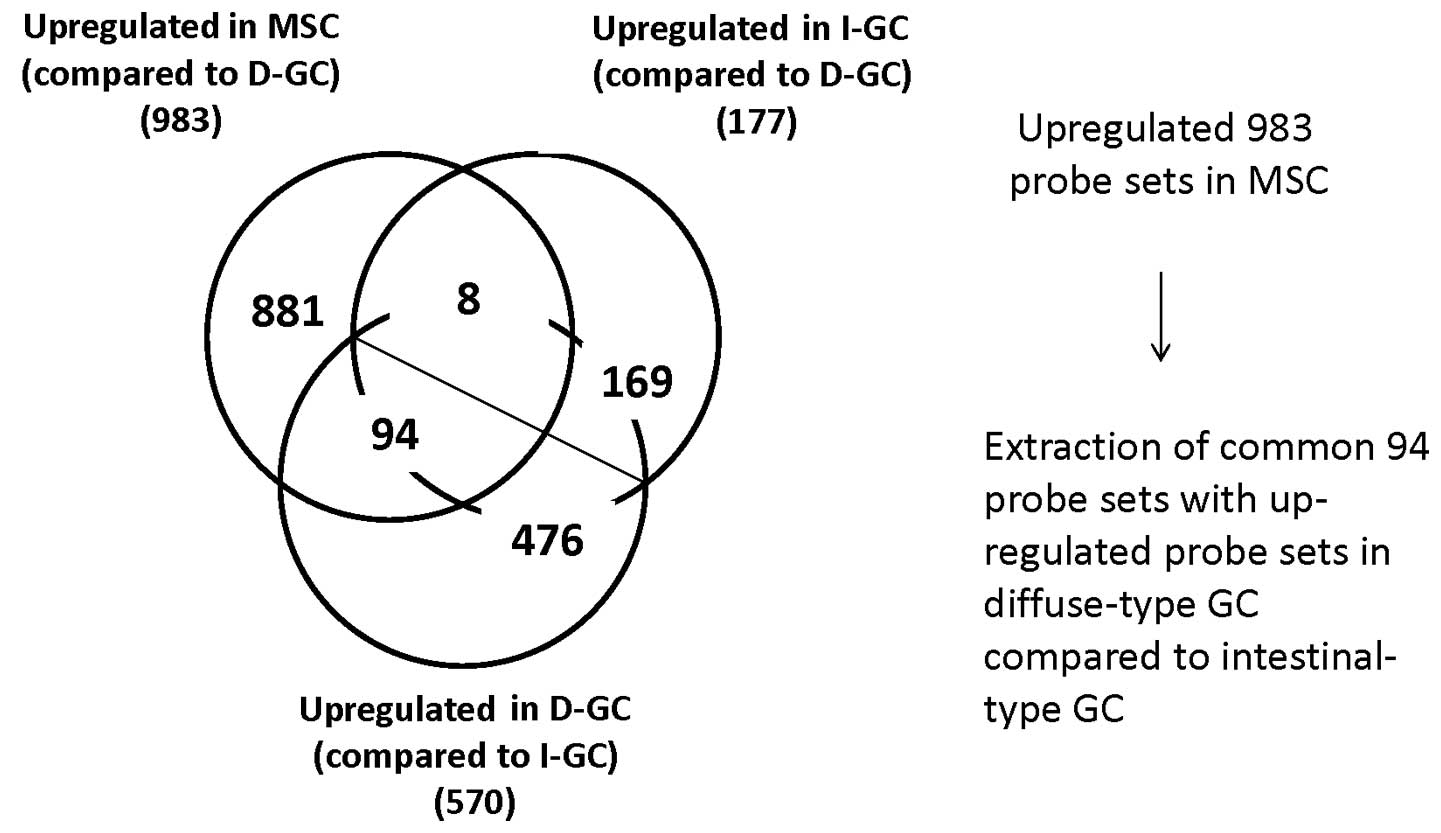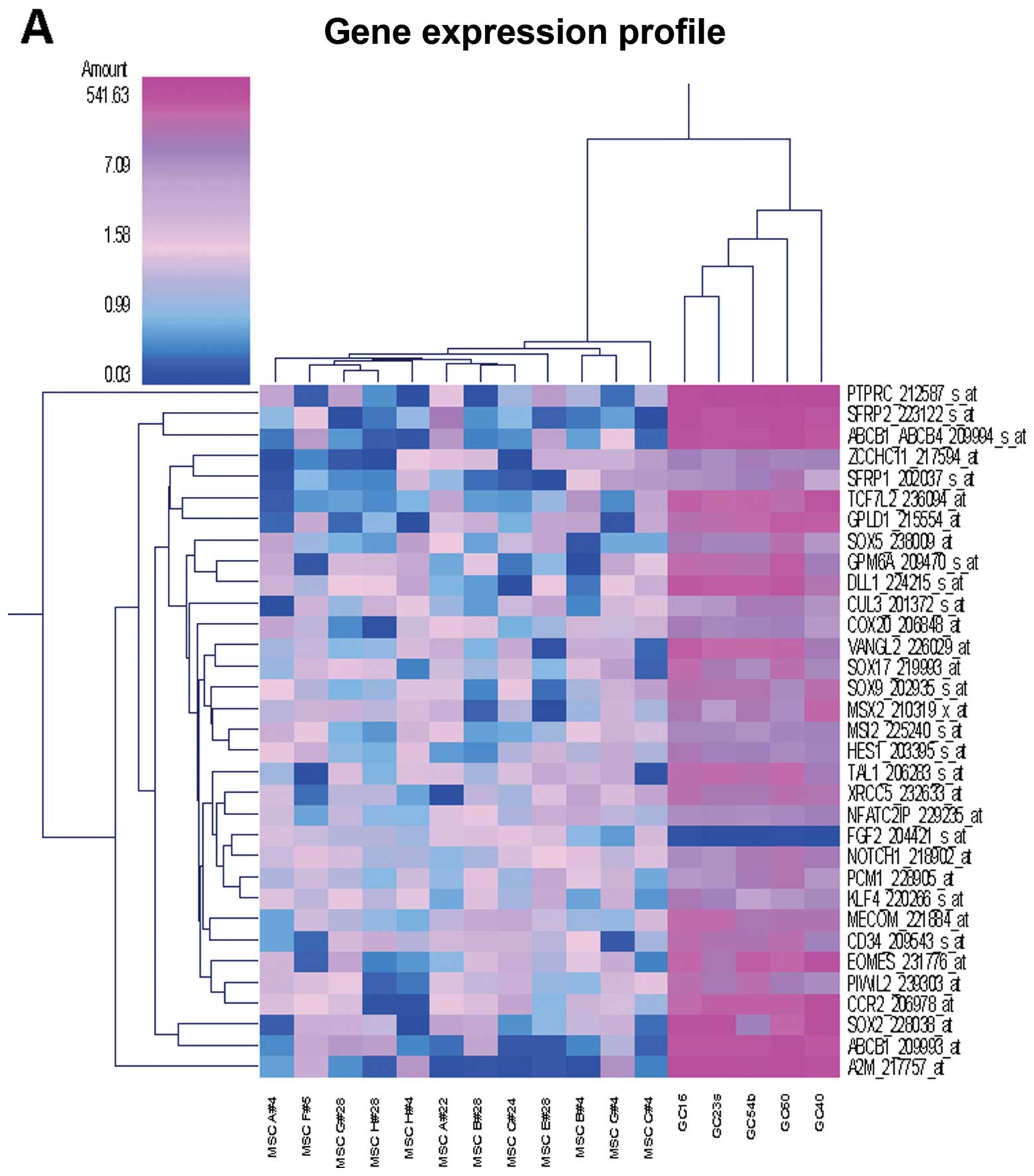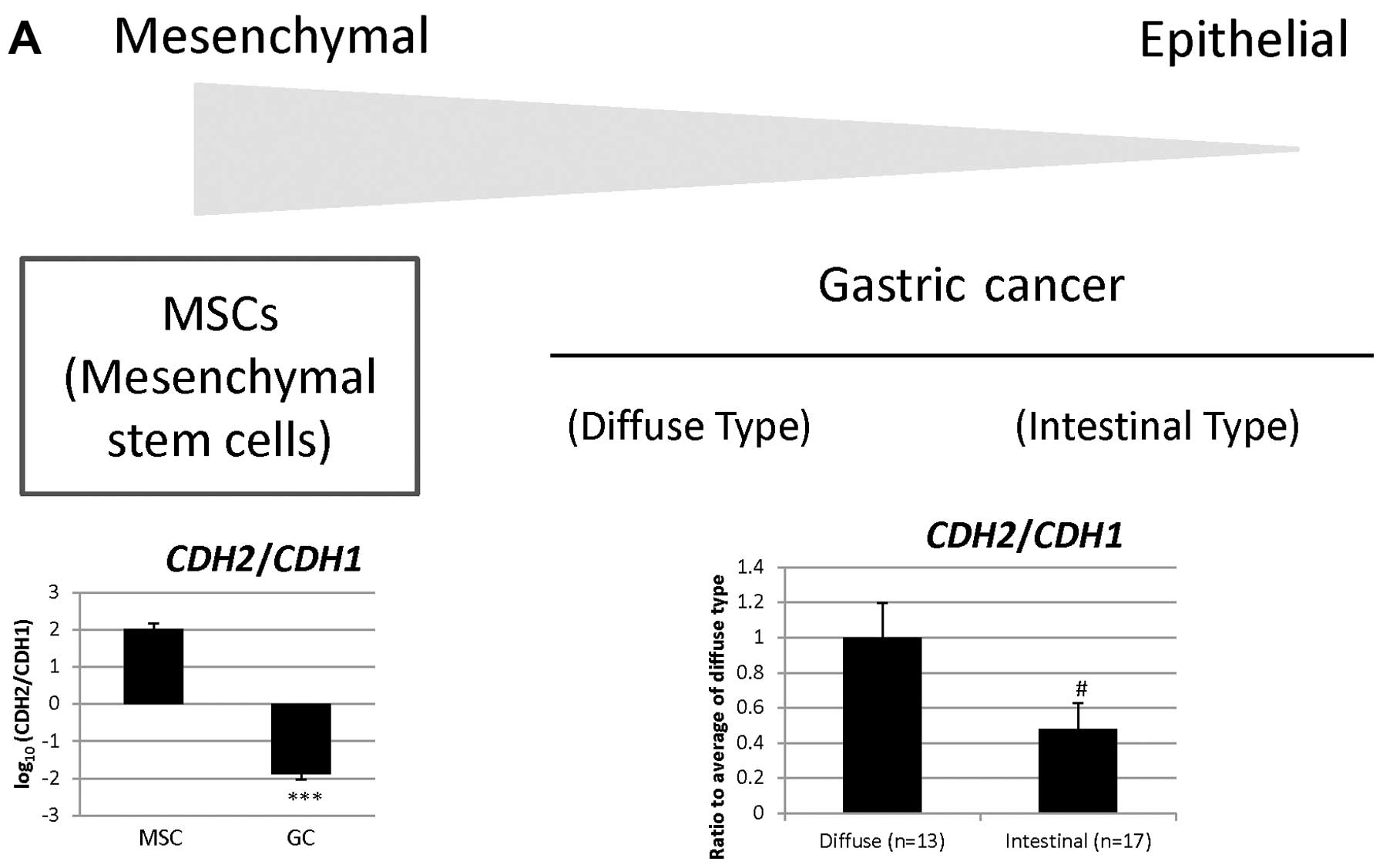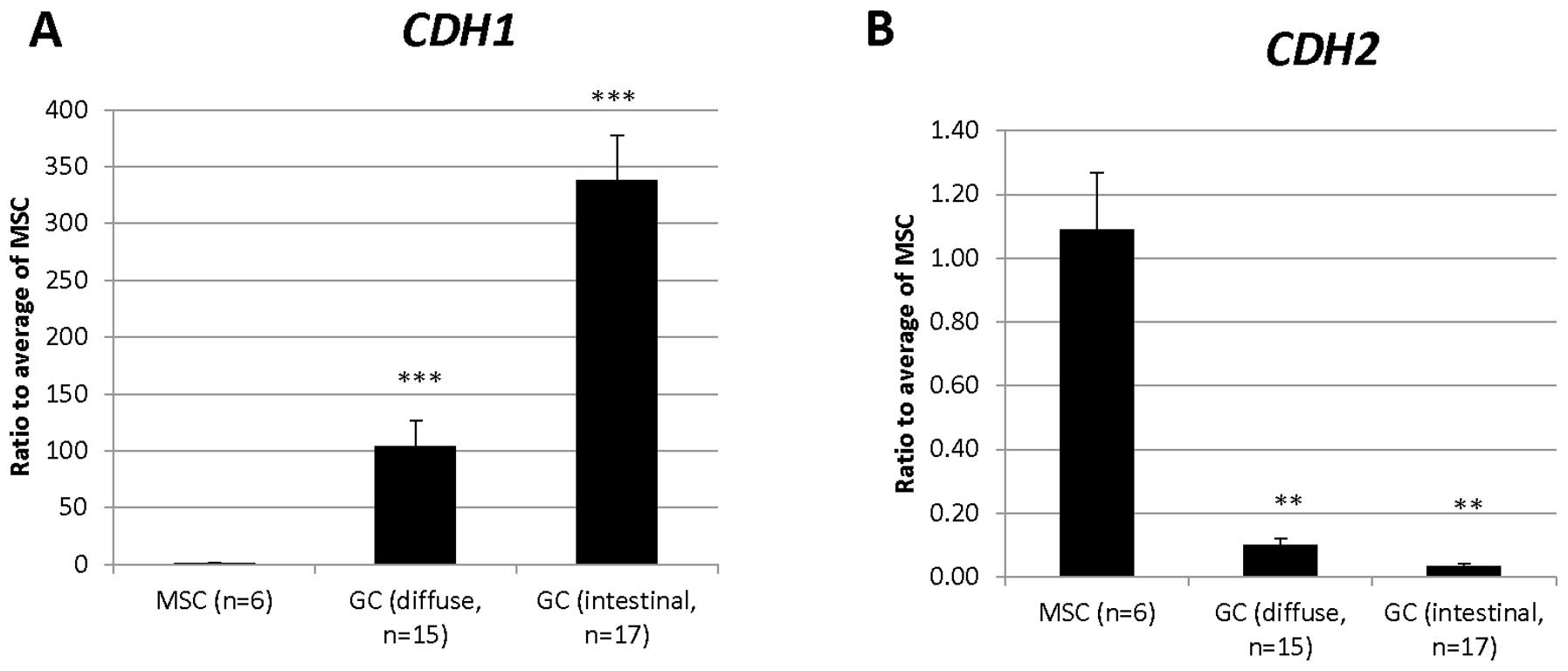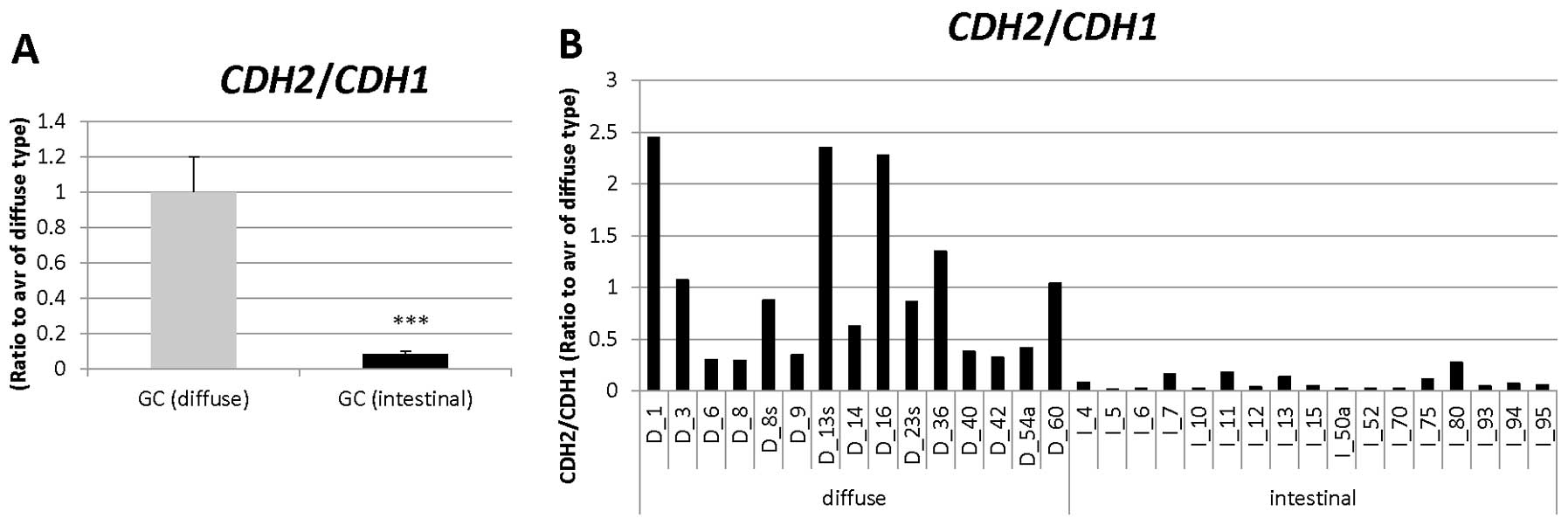|
1.
|
Radisky DC and LaBarge MA:
Epithelial-mesenchymal transition and the stem cell phenotype. Cell
Stem Cell. 2:511–512. 2008. View Article : Google Scholar : PubMed/NCBI
|
|
2.
|
Mani SA, Guo W, Liao MJ, et al: The
epithelial-mesenchymal transition generates cells with properties
of stem cells. Cell. 133:704–715. 2008. View Article : Google Scholar : PubMed/NCBI
|
|
3.
|
Vogelstein B, Papadopoulos N, Velculescu
VE, et al: Cancer genome landscapes. Science. 339:1546–1558. 2013.
View Article : Google Scholar : PubMed/NCBI
|
|
4.
|
Saeki N, Saito A, Choi IJ, et al: A
functional single nucleotide polymorphism in mucin 1, at chromosome
1q22, determines susceptibility to diffuse-type gastric cancer.
Gastroenterology. 140:892–902. 2011. View Article : Google Scholar : PubMed/NCBI
|
|
5.
|
Sakamoto H, Yoshimura K, Saeki N, et al:
Genetic variation in PSCA is associated with susceptibility to
diffuse-type gastric cancer. Nat Genet. 40:730–740. 2008.
View Article : Google Scholar : PubMed/NCBI
|
|
6.
|
Fukaya M, Isohata N, Ohta H, et al:
Hedgehog signal activ ation in gastric pit cell and in diffuse-type
gastric cancer. Gastroenterology. 131:14–29. 2006. View Article : Google Scholar
|
|
7.
|
Ohta H, Aoyagi K, Fukaya M, et al: Cross
talk between hedgehog and epithelial-mesenchymal transition
pathways in gastric pit cells and in diffuse-type gastric cancers.
Br J Cancer. 100:389–398. 2009. View Article : Google Scholar
|
|
8.
|
Ueda T, Volinia S, Okumura H, et al:
Relation between microRNA expression and progression and prognosis
of gastric cancer: a microRNA expression analysis. Lancet Oncol.
11:136–146. 2010. View Article : Google Scholar : PubMed/NCBI
|
|
9.
|
Kountouras J, Zavos C and Chatzopoulos D:
New concepts of molecular biology on gastric carcinogenesis.
Hepatogastroenterology. 52:1305–1312. 2005.PubMed/NCBI
|
|
10.
|
Tanabe S, Sato Y, Suzuki T, et al: Gene
expression profiling of human mesenchymal stem cells for
identification of novel markers in early- and late-stage cell
culture. J Biochem. 144:399–408. 2008. View Article : Google Scholar : PubMed/NCBI
|
|
11.
|
Aoyagi K, Minashi K, Igaki H, et al:
Artificially induced epithelial-mesenchymal transition in surgical
subjects: its implications in clinical and basic cancer research.
PLoS One. 6:e181962011. View Article : Google Scholar : PubMed/NCBI
|
|
12.
|
Edgar R, Domrachev M and Lash AE: Gene
Expression Omnibus: NCBI gene expression and hybridization array
data repository. Nucleic Acids Res. 30:207–210. 2002. View Article : Google Scholar : PubMed/NCBI
|
|
13.
|
Sigurdsson V, Hilmarsdottir B,
Sigmundsdottir H, et al: Endothelial induced EMT in breast
epithelial cells with stem cell properties. PLoS One. 6:e238332011.
View Article : Google Scholar : PubMed/NCBI
|
|
14.
|
Guillot C and Lecuit T: Mechanics of
epithelial tissue homeostasis and morphogenesis. Science.
340:1185–1189. 2013. View Article : Google Scholar : PubMed/NCBI
|
|
15.
|
Gupta PB, Onder TT, Jiang G, et al:
Identification of selective inhibitors of cancer stem cells by
high-throughput screening. Cell. 138:645–659. 2009. View Article : Google Scholar : PubMed/NCBI
|
|
16.
|
Elenbaas B, Spirio L, Koemer F, et al:
Human breast cancer cells generated by oncogenic transformation of
primary mammary epithelial cells. Gene Dev. 15:50–65. 2001.
View Article : Google Scholar : PubMed/NCBI
|
|
17.
|
Lu D, Choi MY, Yu J, et al: Salinomycin
inhibits Wnt signaling and selectivity induces apoptosis in chronic
lymphocytic leukemia cells. Proc Natl Acad Sci USA.
108:13253–13257. 2011. View Article : Google Scholar : PubMed/NCBI
|
|
18.
|
Huch M, Dorrell C, Boj SF, et al: In
vitro expansion of single Lgr5+ liver stem cells
induced by Wnt-driven regeneration. Nature. 494:247–250. 2013.
View Article : Google Scholar
|
|
19.
|
Nishimura K, Semba S, Aoyagi K, et al:
Mesenchymal stem cells provide an advantageous tumor
microenvironment for the restoration of cancer stem cells.
Pathobiology. 79:290–306. 2012. View Article : Google Scholar : PubMed/NCBI
|
|
20.
|
Rudin CM, Durinck S, Stawiski EW, et al:
Comprehensive genomic analysis identifies SOX2 as a frequently
amplified gene in small-cell lung cancer. Nat Genet. 44:1111–1116.
2012. View Article : Google Scholar : PubMed/NCBI
|
|
21.
|
Jia X, Li X, Xu Y, et al: SOX2 promotes
tumorigenesis and increases the anti-apoptotic property of human
prostate cancer cell. J Mol Cell Biol. 3:230–238. 2011. View Article : Google Scholar : PubMed/NCBI
|
|
22.
|
Bass AJ, Watanabe H, Mermel CH, et al:
SOX2 is an amplified lineage-survival oncogene in lung and
esophageal squamous cell carcinomas. Nat Genet. 41:1238–1242. 2009.
View Article : Google Scholar : PubMed/NCBI
|
|
23.
|
Costa Y, Ding J, Theunissen TW, et al:
NANOG-dependent function of TET1 and TET2 in establishment of
pluripotency. Nature. 495:370–374. 2013. View Article : Google Scholar : PubMed/NCBI
|
|
24.
|
Isohata N, Aoyagi K, Mabuchi T, et al:
Hedgehog and epithelialmesenchymal transition signaling in normal
and malignant epithelial cells of the esophagus. Int J Cancer.
125:1212–1221. 2009. View Article : Google Scholar : PubMed/NCBI
|
|
25.
|
Cano A, Pérez-Moreno MA, Rodrigo I, et al:
The transcription factor snail controls epithelial-mesenchymal
transitions by repressing E-cadherin expression. Nat Cell Biol.
2:76–83. 2000. View Article : Google Scholar : PubMed/NCBI
|
|
26.
|
Sato T and Clevers H: Growing
self-organizing mini-guts from a single intestinal stem cell:
mechanism and applications. Science. 340:1190–1194. 2013.
View Article : Google Scholar : PubMed/NCBI
|
|
27.
|
Schepers AG, Snippert HJ, Stange DE, et
al: Lineage tracing reveals Lgr5+ stem cell activity in
mouse intestinal adenomas. Science. 337:730–735. 2012. View Article : Google Scholar : PubMed/NCBI
|
|
28.
|
Nakanishi Y, Seno H, Fukuoka A, et al:
Dclk1 distinguishes between tumor and normal stem cells in the
intestine. Nat Genet. 45:98–103. 2013. View Article : Google Scholar : PubMed/NCBI
|




